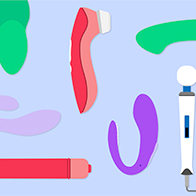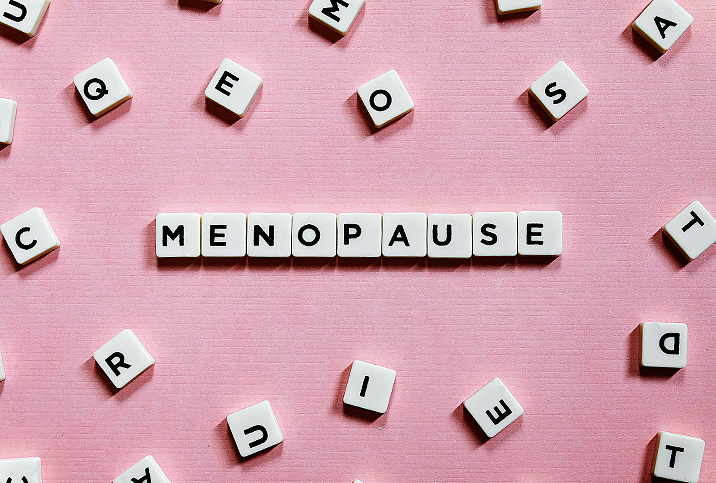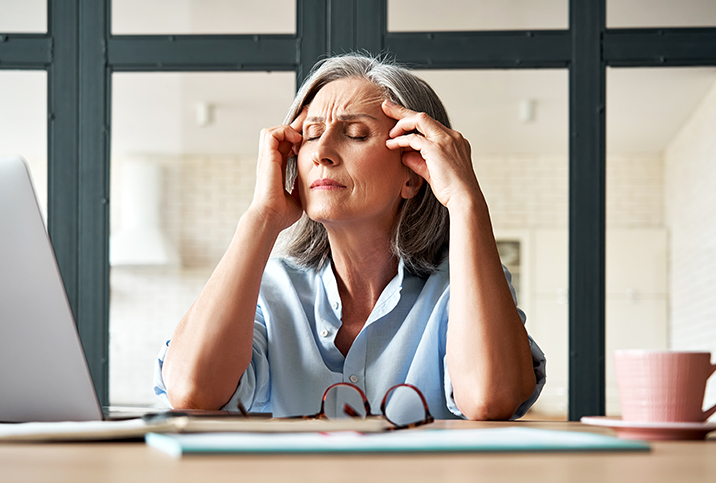Treating Sexual Dysfunction During Menopause Might Include a Vibrator

The decreased production of estrogen during the menopausal transition and after menopause has profound effects on a woman's body. And her quality of life may be greatly inhibited if she's unable to maintain a satisfying sex life.
Many side effects of menopause can be disruptive to a regular sex life. Women may experience an absence of sexual desire, commonly known as arousal disorder or hypoactive sexual desire disorder (HSDD). Menopausal women may also experience painful sexual penetration due to vaginal atrophy.
The good news is that there is help—and the use of a vibrator may be an aid in treating women with sexual dysfunction.
Menopausal sexual dysfunction
"Vaginal atrophy and arousal disorder are closely linked with the loss of sexual hormones," explained Anna Camille Moreno, D.O., a certified menopause specialist in Raleigh, North Carolina. However, each woman will present differently and have varied medical and sexual histories, which makes it impossible to create a set treatment protocol.
Arousal disorder or HSDD is "a very complex entity," Moreno said. "Decreased sexual sensation or stimulation can be hard to differentiate, whether it's at the level of the hormonal deficiency or there are [other attributing factors]." These other causes are part of what we call the biopsychosocial model—a theory that says to best understand a person's medical condition, you must consider their biology along with their psychological and social factors.
"Is a woman's loss of arousal related to loss of estrogen or loss of testosterone, which is also produced by the ovaries, or [is it the result of] a relationship's quality, intimacy [concerns] now or [from events] in the past?" Moreno asked. "Women may also have other underlying medical conditions, including diabetes or uncontrolled blood pressure, [which] is causing the lack of arousal."
A 2009 study in The Journal of Sexual Medicine suggested that 'vibrator use was significantly related to several aspects of sexual function (i.e., desire, arousal, lubrication, orgasm, pain, overall function).'
A low libido or nonarousal are complex conditions that women and their doctors need to openly discuss, since the causes may lie in hormonal loss or changes with their neurotransmitters in the central nervous system. There also may be concern with a loss of "energy, fatigue [or] a depressed mood," Moreno said.
While there are possible medicinal options, studies have also suggested that using a vibrator promotes better overall sexual health and well-being in women. A 2009 study in The Journal of Sexual Medicine suggested that "vibrator use was significantly related to several aspects of sexual function (i.e., desire, arousal, lubrication, orgasm, pain, overall function) with recent vibrator users scoring higher on most sexual function domains, indicating more positive sexual function."
However, if women are experiencing any vaginal pain or discomfort due to vaginal atrophy, using a vibrator can be painful and counterproductive.
Treating sexual dysfunction
Sally Turner is the co-director of Women4Real, an innovative health and communications consultancy championing women's health, sexuality and well-being in Brighton, England. For Turner, menopause began at age 47, as did the symptoms of vaginal atrophy.
"Because I had a history of vulvodynia (and lichen sclerosus and yeast infections), I initially thought my symptoms were flare-ups of those conditions," Turner said. "But the symptoms were worse than I'd had in years, and my vulva and vagina felt really dry, tight and prickly. When I walked even a short distance, it felt like I was being cut by razor blades—it was that bad."
For Turner, her vaginal atrophy made penetrative sex impossible. "I'd got over vulvodynia a decade previously and sex had been comfortable and enjoyable through my 40s, but then penetration became impossible again. I tried organic hypoallergenic lubes, using small vaginal dilators and all the things I'd done previously to manage my vulvodynia, but none of it worked," she said.
When Turner started on menopausal hormone treatment (MHT), her symptoms disappeared and sexual activity was back on the table. "It just felt easier to spend some time in relationship with myself and just 'doing me' (with the help of my bullet vibrator!) while I adjusted to menopause and all the symptoms I was getting—vaginal atrophy, night sweats, hot flushes, depression and anxiety, dry skin…you name it, I had it!"
According to Moreno, the loss of estrogen affects not only the tissue in the vagina but also the tissue "in the bladder and the urethra and the blood supply" to those areas. Because this tissue connects both the vagina and urinary system, doctors now "use the term genitourinary syndrome of menopause, GSM for short." If women experience vaginal pain and/or urinary leaking, a pelvic exam is necessary to "see if they have [any] atrophic change," Moreno said.
While MHT was the key for Turner, there are a variety of treatments available.
For women with vaginal atrophy/GSM symptoms, Moreno "first treats at the level of the tissue, either [prescribing] vaginal estrogen [cream] or DHEA. You want to make sure you're reversing [the atrophy], that the tissue is pink, less pale, more lubricated before you…insert anything inside," she explained. "Depending on the symptoms related to GSM and depending on subsequent exams, [women] can introduce vaginal dilators over time."
If women already have a vibrator, they don't necessarily need to purchase a dilator, since both work in the same way. "Our goal," Moreno stressed, "is progress based on how [the patient] is feeling. This isn't a race."
Sexual health beyond menopause
Moreno's goal as a certified menopause specialist is to bridge the "big healthcare gap" because physicians historically have not proactively addressed women's midlife sexual dysfunction.
In the past year, Moreno has experienced an increase in her menopausal patients bringing up once considered sensitive health topics, such as "concerns with sexual dysfunction or low libido or pain with intercourse."
"I really do think that women are getting more and more empowered," Moreno said. "[They] read these articles and blog posts and think, 'I shouldn't ignore [my] symptoms. You know, there are treatment options for me. There is help, and I need to get help.' And this is why I'm able to address more menopausal concerns in my practice."
Moreno hopes that the times of doctors saying, "'This is part of natural aging and…that may get better or may get worse, but it's something you just have to live with,'" are over.
According to Moreno, the use of a vaginal dilator or vibrator to help promote blood flow and natural secretion can be an effective option for some menopausal women. Beyond vibrators, she outlined other treatment options, as each woman has their own "menopausal journey":
- Vaginal estrogen preparation or MHT for vaginal tissue or bladder tissue concerns
- Basal motor symptoms treatment, which is a systemic hormone therapy of estrogen either in a pill or a patch (and in some cases the use of low-dose testosterone cream)
- Lubricants and moisturizers used on-demand, specifically before or during intercourse as maintenance therapies
- Vaginal DHEA
- Complementary alternative therapies, such as acupuncture
- SSRIs in low doses
Turner also highlighted the need for "an individualized, multidisciplinary approach" for treating sexual dysfunction through the menopausal phases.
"What works initially at menopause may need adjusting as [a woman's] estrogen levels slowly decrease over time," she said. "My symptoms of vaginal atrophy returned as my estrogen levels diminished, so I've had to up my levels of estrogen over the past few years (using oral and intra-vaginal treatments combined) to stay healthy and symptom-free. It's really important to work with the support of a specialist menopause doctor."




















